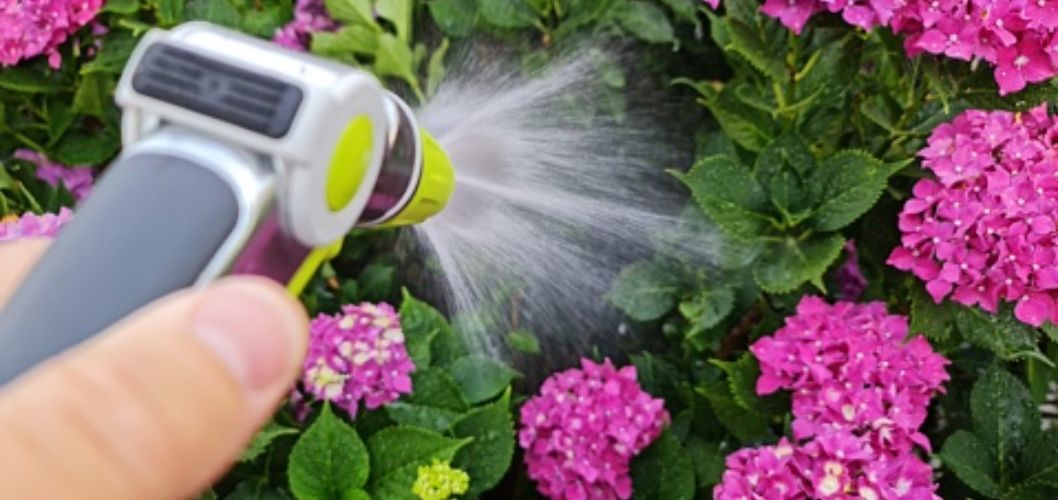Hydrangeas are a beautiful flowering plant that can add a touch of elegance to any garden or landscape. With their large, colorful blooms and lush foliage, hydrangeas are a popular choice for many gardeners. In this article, we will cover everything you need to know about growing and caring for hydrangeas.
Types of Hydrangeas
Before you start growing hydrangeas, it’s important to know which type you want to plant. There are four main types of hydrangeas: mophead, lacecap, panicle, and oakleaf.
Mophead hydrangeas have large, round flower clusters that come in shades of pink, blue, purple, and white. Lacecap hydrangeas have flat flower clusters with a ring of larger flowers around the edge and smaller flowers in the center. Panicle hydrangeas have cone-shaped flower clusters that start out white and gradually turn pink or red. Oakleaf hydrangeas have cone-shaped clusters of white flowers and distinctive leaves that resemble oak leaves.
How to Grow and Care for Hydrangeas
Choosing the Right Location
Hydrangeas prefer moist, well-draining soil and partial shade. They need at least four hours of morning sun, but too much sun can damage the flowers and foliage. When choosing a location for your hydrangeas, look for a spot that gets morning sun and afternoon shade.
Hydrangeas also prefer soil that is rich in organic matter. If your soil is sandy or clay-like, amend it with compost or peat moss before planting.
Planting Hydrangeas
When planting hydrangeas, dig a hole that is twice as wide as the root ball and just as deep. Remove any grass or weeds from the hole and mix some compost or peat moss into the soil.
Carefully remove the hydrangea from its container and gently loosen the roots. Place the plant in the hole and backfill with soil, making sure that the crown of the plant is level with the ground. Water thoroughly.
Watering and Fertilizing
Hydrangeas need regular watering to thrive. They prefer moist soil, but not soggy soil. Water deeply once or twice a week, depending on rainfall and temperature.
Fertilize your hydrangeas in the spring and summer with a balanced fertilizer. Avoid fertilizing in the fall as this can encourage new growth that can be damaged by frost.

Pruning
When it comes to pruning hydrangeas, it depends on the type of hydrangea you have. Mophead and lacecap hydrangeas bloom on old wood, so they should be pruned after they finish blooming in the summer. Panicle and oakleaf hydrangeas bloom on new wood, so they can be pruned in late winter or early spring.
To prune, remove any dead or damaged wood and cut back the stems by about a third. Be careful not to cut off any flower buds on mophead and lacecap hydrangeas.
Pests and Diseases
Hydrangeas are relatively pest-free, but they can be susceptible to powdery mildew and leaf spot. To prevent these diseases, water at the base of the plant and try to avoid getting water on the leaves. If you do see signs of mildew or leaf spot, remove any infected leaves and treat with a fungicide.
In terms of pests, hydrangeas can attract aphids, spider mites, and whiteflies. To control these pests, use insecticidal soap or neem oil.
Frequently Asked Questions
1. What kind of soil do hydrangeas need?
Hydrangeas prefer moist, well-draining soil that is rich in organic matter. If your soil is sandy or clay-like, amend it with compost or peat moss before planting.
2. How much sun do hydrangeas need?
A: Hydrangeas need at least four hours of morning sun, but too much sun can damage the flowers and foliage. Look for a spot that gets morning sun and afternoon shade.
3. How often should I water my hydrangeas?
Hydrangeas need regular watering, but not soggy soil. Water deeply once or twice a week, depending on rainfall and temperature.
4. When should I prune my hydrangeas?
It depends on the type of hydrangea you have. Mophead and lacecap hydrangeas should be pruned after they finish blooming in the summer, while panicle and oakleaf hydrangeas can be pruned in late winter or early spring.
Conclusion
In conclusion, hydrangeas are a beautiful and rewarding plant to grow. With their stunning blooms and lush foliage, they can add a touch of elegance to any garden or landscape. By choosing the right location, watering and fertilizing properly, and pruning as needed, your hydrangeas will thrive and provide years of beauty and enjoyment.
